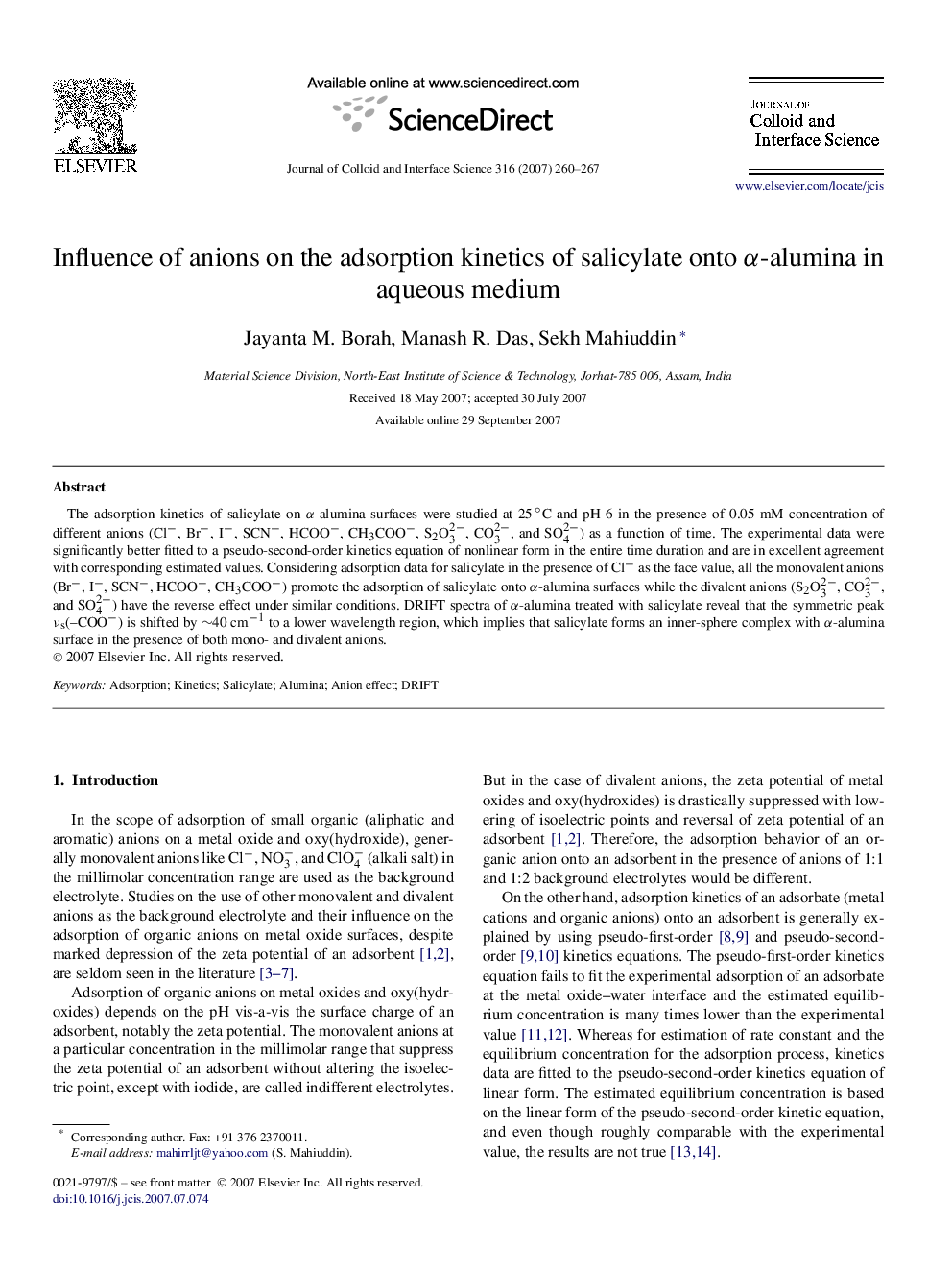| Article ID | Journal | Published Year | Pages | File Type |
|---|---|---|---|---|
| 612005 | Journal of Colloid and Interface Science | 2007 | 8 Pages |
The adsorption kinetics of salicylate on α-alumina surfaces were studied at 25 °C and pH 6 in the presence of 0.05 mM concentration of different anions (Cl−, Br−, I−, SCN−, HCOO−, CH3COO−, S2O2−3, CO2−3, and SO2−4) as a function of time. The experimental data were significantly better fitted to a pseudo-second-order kinetics equation of nonlinear form in the entire time duration and are in excellent agreement with corresponding estimated values. Considering adsorption data for salicylate in the presence of Cl− as the face value, all the monovalent anions (Br−, I−, SCN−, HCOO−, CH3COO−) promote the adsorption of salicylate onto α-alumina surfaces while the divalent anions (S2O2−3, CO2−3, and SO2−4) have the reverse effect under similar conditions. DRIFT spectra of α-alumina treated with salicylate reveal that the symmetric peak νs(COO−) is shifted by ∼40 cm−1 to a lower wavelength region, which implies that salicylate forms an inner-sphere complex with α-alumina surface in the presence of both mono- and divalent anions.
Graphical abstractThe nonlinear pseudo-second-order kinetics equation was better than the linear form. Monovalent anions promote the adsorption of salicylate onto α-alumina surfaces while the divalent anions have the reverse effect.Figure optionsDownload full-size imageDownload as PowerPoint slide
